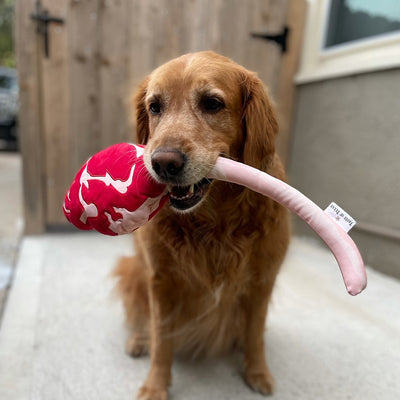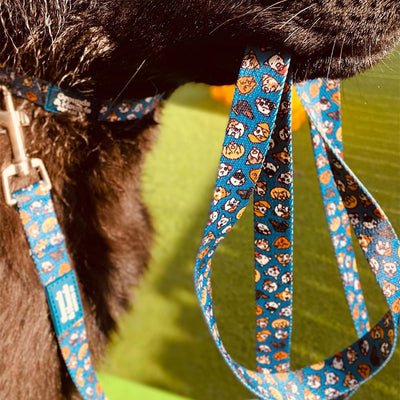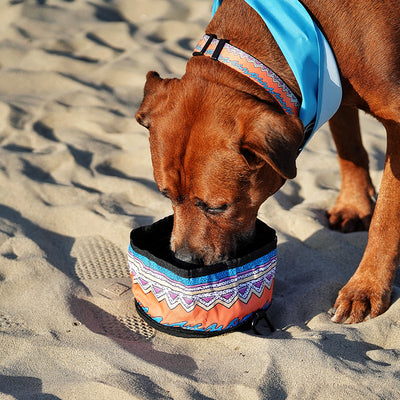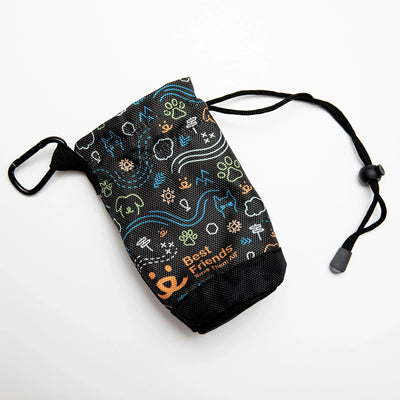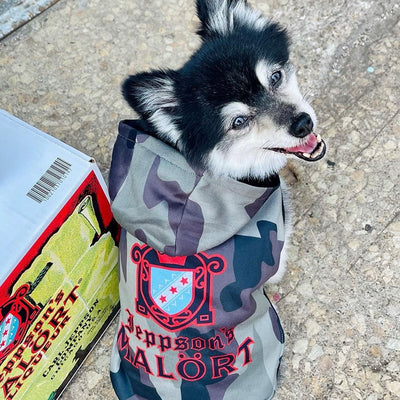Communication lies at the heart of the special bond between a dog and its owner, as the ability to understand one another is what transforms these two into lifelong companions. Consider, for instance, how dog owners can utilize dog collars and custom dog leashes to communicate subtle messages to their pets both during training and in daily life. A gentle tug on the lead, for example, can signal a dog to stop or heel, serving as a nonverbal cue that the dog learns to follow.
While these physical tools are effective for training, vocal commands entail a more complex level of communication altogether. But if they can teach their dog to respond to specific verbal cues, an owner can also convey a wide range of instructions and signals—all without the need for a physical connector like a leash. This transition from leash-guided gestures to the freedom of spoken commands both strengthens the bond between human and animal and also enhances the dog's ability to participate in the social world of humans.
If you’ve only just begun teaching your dog to respond to vocal commands, then you’ll definitely want to bear the following key tips from PrideBites in mind:
1) Keep Your Commands Consistent
Dogs generally appreciate routine and consistency. Thus, when you start teaching your dog verbal cues, stick with a single, unambiguous word for each action. This means that if "sit" is the command you've chosen to make your dog sit, then every time you expect him to plop his hindquarters on the ground, the command should be "sit"—not "sit down," not "sit now," or any other variation. Dogs primarily learn through repetition and clear association, so when they consistently hear you using the word "sit," they’ll eventually learn to respond to this command without hesitation.
Furthermore, it’s best to underscore the need for consistency of commands to everyone who regularly interacts with the dog. All members of your household, for instance, should know to use only the word “sit” when they want your dog to sit. This uniform approach prevents confusion and helps your dog understand and follow the command, regardless of who is issuing it. Think of each command as a unique code word that triggers a specific action from your dog—the more consistent the use, the quicker your dog will crack the code.
2) Always Use the Same Tone of Voice
Dogs might not grasp the complexities of human language, but they are extraordinarily sensitive to tones. A dog can distinguish between a tone that is praising and one that is commanding, and your training sessions will be more fruitful if you can harness this sensitivity. For example, a firm, steady tone conveys authority and is often effective for commands that require your dog to either perform an action immediately or to stop doing something, such as "stay" or "leave it." In contrast, a lighter, enthusiastic tone can be infectious and is ideal for praise or commands that you want to associate with positive experiences, like "come" or "fetch."
Using a consistent tone for specific commands aids in reinforcing their meaning. If "come" is always called out in a welcoming, upbeat tone, your dog learns to associate that command with a positive reaction. On the flip side, changing your tone—using a harsh tone for "come" one day and a gentle one the next—can breed uncertainty and hinder the training process. It's also crucial to keep your emotions in check; frustration can seep into your voice and can be unsettling for your dog, which will potentially erode trust and complicate your training efforts.
3) Pair Verbal Commands with Hand or Body Gestures
Canines are naturally skilled at reading body language, and they often understand a hand signal or body movement quicker than a verbal cue. Pair verbal commands with gestures, and you’ll be able to provide an additional visual cue to help your dog along. This can be especially useful in noisy environments or as dogs age and their hearing diminishes. Accompany the command “stay,” for example, with a raised hand, or use a pointed finger towards the ground to signal "down."
Initially, your dog might respond more reliably to these gestures than to your voice alone, but over time, they will likely learn to associate the two together. Eventually, with consistent practice, your dog will respond to the verbal command even without the gesture. To better achieve this, gradually wean your dog off the gestures until they can respond to the vocal commands alone. Over time, you’ll be able to enhance your dog's listening skills and solidify the vocal command as the primary directive.
4) Use Positive Reinforcement
Positive reinforcement is a powerful strategy in dog training. It revolves around rewarding your dog for good behavior, which encourages them to repeat it. Rewards can come in many forms: treats, praise, playtime, or even a simple pat on the head.
The key is to reward your dog immediately after they follow a command correctly, which helps them make the connection between the action and the reward. This timely association encourages your dog to repeat the behavior in anticipation of another reward.
5) Regularly Revisit Your Repertoire of Commands
Training isn't a one-and-done event; it's a continuous process that requires regular practice. To keep your vocal commands fresh in your dog's mind, find ways to revisit them regularly. This doesn't mean that training sessions have to be long or strenuous. Short, frequent reviews often yield better results than infrequent, prolonged sessions.
Incorporate the commands into your daily routine to keep them relevant for your dog. Ask your dog to "sit" before mealtime or "stay" before crossing the street during walks. The integration of training into everyday activities will help your dog recognize the commands as part of their regular life, not just actions to be performed during training.
In conclusion, the path to effective vocal command training lies in consistency and clarity, as well as patience on your part. Integrate these principles into your training routine and you’ll be able to strengthen the communication and bond between you and your dog, leading to a mutually respectful and understanding relationship.

